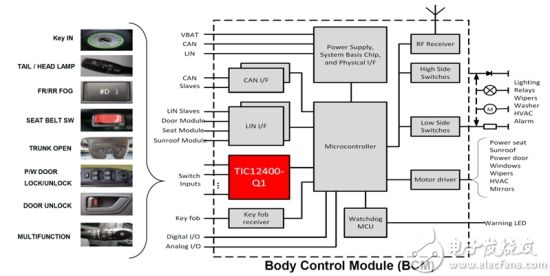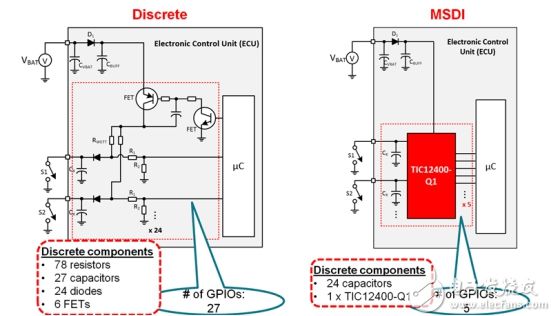Body Control Module - a hidden but essential device on every car
Automotive electronics is realizing more and more functions (safety, driving assistance, providing more information to drivers), and the demand for high-quality electronic devices continues to increase at a high rate. As the functions associated with comfort, safety, equipment and custom driving experiences become more plentiful, the requirements for vehicle electronic systems are correspondingly more stringent.
The Body Control Module (BCM) signals the different functions in the car. They manage a wide range of vehicle functions including door locks, alarm sound controls, internal and external lighting, safety features, wipers, turn indicators and power management. The BCM, which is tied to the vehicle's electronic architecture, provides maximum reliability and economy while reducing the number of required plug-in connections and cable harnesses.
As the demand for increased BCM functionality continues to increase, the number of cable harnesses required is also increasing. For example, according to what Kiyotsugu Oba said in his article "Wiring harnesses for a new generation of cars", in the case of compact cars, the total weight of conventional wire harnesses currently used is about 30 kg / car. In comparison, the total weight of the wire harness of the 1970s was only a few kilograms. BCMs play a decisive role in cost because they can reduce the amount of wiring in the vehicle by providing an interface to the bus system. Approximately 80% of the product budget is determined during the bill of materials (BOM) phase, the early development phase.
Current BCM market trends
The market trend is centralized. Compared to decentralized structures, centralized structures have fewer modules and more features. The advantages of a centralized architecture include simpler network connections, higher cost efficiency, and an optimized number of electronic control units (ECUs) to reduce harness weight. Weight reduction reduces manufacturing costs and increases fuel efficiency, which is a win-win solution for both automakers and car owners.
However, in view of this trend, today's centralized structure is causing the input/output port (I/O) of the microcontroller (MCU) to be used up to connect the switches and sensors in the car. The complex design structure requires 60-120 switches to be connected to the central BCM. One way to solve this problem is to add more discrete components to enable more I/O. Unfortunately, because board design now requires more components, doing so will only translate the mechanical cost of wiring reduction into additional electrical costs.
Is there another way to solve this problem?
One option is to use an integrated multi-switch detection interface solution such as TI's TIC12400-Q1 or TIC10024-Q1 devices. These devices are part of a family of advanced contact monitors, also known as Multi-Switch Detection Interface (MSDI) products, that detect the closing and opening action of 24 to 56 switch contacts (Figure 1).

Figure 1: BCM is implemented by TIC12400-Q1
The MSDI device uses an integrated analog-to-digital converter (ADC)/comparator to detect the state of the external switch and report the switch status to the MCU after detection. The main difference between the TIC10024-Q1 and the TIC12400-Q1 is that the TIC12400-Q1 features switch matrix polling and an integrated ADC, which means it can handle both analog and multi-threshold inputs.
All of these features not only save system costs, but also provide design flexibility to enable BCM to be customized, which will be a decisive market advantage.
Save material costs and reduce board size
Devices like the TIC10024-Q1and TIC12400-Q1enable you to eliminate as many as 120 discrete components; see Figure 2.
Devices such as the TIC10024-Q1 and TIC12400-Q1 can reduce 120 discrete components; see Figure 2.

Figure 2: Comparison of TIC12400-Q1 and discrete solutions
The TIC10024-Q1 and TIC12400-Q1 devices also include integrated electrostatic discharge (ESD) protection (±8kV), battery reverse protection and transient pulse protection. Eliminating external protection components further reduces bill of materials and board size. Reduced hardware and software complexity also helps improve reliability, while scalability enables its availability on low, medium, and high-end platforms (see Figure 3).

Figure 3: Comparison of discrete solutions with MSDI devices
MSDI devices are intelligent, integrate functionality, adapt to current BCM trends, and help integrate the right electronics without costly.
Multi-Port Hub,20 Port Charger,Usb Charger Station,20 Port Usb Hub
shenzhen ns-idae technology co.,ltd , https://www.szbestchargers.com
